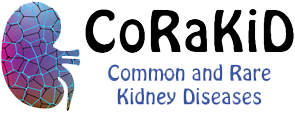A model of hemodialysis after acute kidney injury in rats
Résumé
Acute kidney injury (AKI) is frequent among critically ill patients. Renal replacement therapy (RRT) is often required to deal with severe complications of AKI. This technique is however associated with side effects such as hemodynamic instability and delayed renal recovery. In this study, we aimed to describe a novel model of hemodialysis in rats with AKI and depict a dialysis membrane performance. Methods Eighteen Sprague–Dawley rats received 0.75% adenine-rich diet to induce AKI. After 2 weeks, nine underwent an arterio-venous extracorporeal circulation (ECC) (ECC group) for 2 h without a dialysis membrane on the circuit and nine received a hemodialysis session (HD group) for 2 h with an ECC circuit. All rats were hemodynamically monitored, and glomerular filtration rate (GFR) was measured by transcutaneous fluorescence after the injection of FITC-Sinistrin. Blood samples were collected at different time points to assess serum creatinine and serum urea concentrations and to determine the Kt/V. Sinistrin concentration was also quantified in both plasma and dialysis effluent. Results After 2 weeks of adenine-rich diet, rats exhibited a decrease in GFR. Both serum urea and serum creatinine concentrations increased in the ECC group but remained stable in the HD group. We found no significant difference in serum creatinine and serum urea concentrations between groups. At the end of experiments, mean serum urea was 36.7 mmol/l (95%CI 19.7–46.9 mmol/l) and 23.6 mmol/l (95%CI 15.2–33.5 mmol/l) in the ECC and HD groups, respectively ( p = 0.15), and mean serum creatinine concentration was 158.0 µmol/l (95%CI 108.1–191.9 µmol/l) and 114.0 µmol/l (95%CI 90.2–140.9 µmol/l) in the ECC and HD groups, respectively ( p = 0.11). The Kt/V of the model was estimated at 0.23. Sinistrin quantity in the ultrafiltrate raised steadily during the dialysis session. After 2 h, the median quantity was 149.2 µg (95% CI 99.7–250.3 µg). Conclusions This hemodialysis model is an acceptable compromise between the requirement of hemodynamic tolerance which implies reducing extracorporeal blood volume (using a small dialyzer) and the demonstration that diffusion of molecules through the membrane is achieved.
Origine : Fichiers éditeurs autorisés sur une archive ouverte
licence : CC BY - Paternité
licence : CC BY - Paternité


